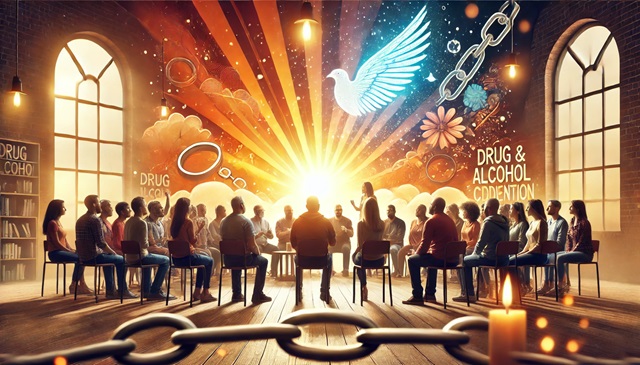When discussing substance abuse, most people do not think of alcohol. Many people do not see it as a drug similar to the way that many people only see illegal drugs as an option for abuse. However, alcohol is a drug and it can be abused to the degree that a person develops an addiction to it.
Alcoholism in the workplace is a major issue, more so in some aspects than other instances of substance abuse. This is because alcohol is noticeably easier to access and has a larger presence than other abused substances. It's an entire industry that has strong ties to the economy. Alcoholic beverages can be found in stores and restaurants across the country. Some recipes call for a specific type of alcohol as an ingredient. Some of the largest and oldest companies in the country focus on the production and distribution of alcohol. The stuff is everywhere.
This article will discuss, if you haven't guessed, alcohol abuse. Topics will include the signs of usage and the effects, both short term and long term; alcoholism can have on a person. The treatment options and recovery prognosis for alcoholism will be discussed. Clarification about what actually constitutes as alcoholism, verses casual or moderate drinking, will also be covered in this article.
When Does Drinking Become Alcoholism?
Whether they should or not, many people have had some amount of alcohol. Not all of them abused it, nor does it mean that everyone who has ever had more than one alcoholic drink at a time is considered an alcoholic. So at what point does drinking count as alcoholism? As with any other condition, there are some requirements a person would meet before being deemed an alcoholic. Primarily, the amount a person drinks at a time and the frequency of which they drink would be the main diagnostics. Other factors may include what kinds of alcohol (beer, wine, etc.) are being consumed, the person's age, and any additional risk factors.
There are two noticeable drinking practices that may suggest a person is developing into an alcoholic: binge drinking and heavy drinking. Binge drinking is often defined as consuming mass quantities of alcohol in one sitting, enough to raise blood alcohol concentration levels (BAC) to the legal limit in about a two-hour time frame. On average, that's about 5 drinks for men and 4 for women, but again it varies on the type of alcohol. A person's tolerance can also be a factor, although this may be an indicator that they are developing alcoholic tendencies. To be cause for concern, there should be multiple instances of binge drinking; once or twice isn't enough for a pattern, but weekly occurrences of binge drinking is.
According to SAMHSA, heavy drinking is defined as five drinks or more at once, with five or more instances in a 30-day period. Some may view this as repeated instances of binge drinking, generating a pattern. Moderate drinking--1-2 alcoholic drinks in a day--can move into heavy drinking territory if it becomes a daily occurrence and the person is consuming drinks with high alcohol content. This can be a bit of a gray area, and may put some people at risk for dangerous drinking habits if it continues.
Statistics
Due to the prevalence of alcoholic products, as mentioned at the start of this article, the rate of people who abuse alcohol is rather high. SAMHSA's National Survey on Drug Use and Health in 2014 found 139.7 million people reported using alcohol in the month leading up to the survey. That was about half of those surveyed and included binge drinking--60.9 million--and heavy drinking--16.3 million. When you consider that the United States has over 300 million people, that's a pretty significant chunk of the population!
Alcohol, both when it is and isn't used in an abusive manner, can be pretty damaging in general. The Centers for Disease Control and Prevention (CDC) found 30,722 deaths from alcohol in 2014. This number doesn't count deaths by drunk driving or other instances where an intoxicated person's actions resulted in the deaths of others. The same 2014 report did find that there were about 19,388 deaths due to alcoholic liver disease, which applied to current and former alcohol drinkers. While there are no exact numbers regarding alcohol-related injuries, NCADD--the National Council on Alcoholism and Drug Dependence--estimates that about 40% of hospital beds are for patients with conditions and injuries related to alcohol use. The only exceptions made in that estimate were intensive care and maternity patients, who could still could potentially be receiving care for an alcohol-related condition.
When looking at alcoholism in the workplace, things don't seem to get any better. NCADD's analysis of federal surveys found around 24% of workers (profession and industry not specified) reported that they had drank alcohol during the workday in the past year at least once. Amongst patients who had been injured at work or in work-related incidents, alcohol was detected via breathalyzer in about 16%. They also found that about 11% of workplace fatalities involved the alcohol use by the victim at the time of the accident. NCADD also states that one-fifth of employees across industries reported or believed an employee's drinking compromised workplace safety and productivity. This included alcohol use at work and in the employee's personal time.
Signs of Use
The signs of alcoholism tend to include any markers indicating binge or heavy drinking. Many people are familiar with the concept of being drunk; they've experienced it themselves or they've seen a drunken person in person, on television, etc. Likewise, you may be familiar with what it's like to be hungover through the same avenues. However, it is unwise to be solely dependent on these as indicators of a person's alcoholism. There may be signs that a person has binge and heavy drinking habits, even if they are not drinking at work.
-
Changes in Behavior--Lack of energy or motivation, a slowed reaction time, seemingly not paying attention or absent minded, and poor coordination. They may be impatient or short with their peers.
-
Physical appearance--Weight loss, nausea, sweating, and chills are common. It is possible that they may smell like alcohol (clothes, breath, hair, etc.), but they could also smell as if they used excessive amounts of cologne or perfume in an attempt to cover any alcohol scent.
-
Emotional--Frequent alcohol use does affect a person's mental state. Mood swings, anxiety, depression, and aggression are possible. It is most likely that a person with any kind of drinking problem will be in denial about their actions, which may manifest through their emotions.
There are also warning signs that may suggest a person is headed towards alcoholism:
-
Neglected Responsibilities--Alcoholism, like most addictions, often becomes a person's primary focus in life. Personal and professional responsibilities gradually end up taking a back seat to drinking. It may first begin as small things and then build from there.
-
Relationship Loss--Relationships with friends, family, and co-workers will also be second to an alcoholic's drinking. Interactions may change or decrease, and possibly stop altogether as a person's drinking habits worsen.
-
Blackouts--Blacking out is where a person is unable to remember what happened while under the influence of something. If a person is having blackouts, then they've had far too much for their drinking to be anywhere near "safe" levels. This is a major sign that something is wrong and should not be put off as a non-issue.
-
Drinking at questionable times--Frequently drinking before going to work or before an important event is a red flag for problematic drinking. Getting behind the wheel of a car or other vehicle--regardless if the person is just buzzed or full on intoxicated--is incredibly dangerous behavior. Even if something hasn't happened yet, the chances increase with every instance.
Employers and workers who suspect an employee is an alcoholic or is developing into one, and is possibly drinking at work should look at additional signs. Instances of poor attendance and frequent breaks are noticeable indicators for any substance abuse. They may also be tardy, and have poor excuses as to why. Many will be defensive or very private about their personal lives to avoid giving away any details that they may be drinking. There may also be changes in their work performance; these can be noticeable or evident over time.
The Short Term Effects
Even though they only last for a little while, the short-term effects of alcohol abuse can have potentially devastating consequences. Many instances of alcohol-related accidents occur while the user is under the influence, such as in drunk driving accidents. These effects are possibilities of what a person who abuses alcohol may experience, based on factors such as their tolerance, the amount they've drank, and their physical condition. Some effects may develop worse than others in some cases may.
Users may experience short term effects that are psychological in nature, such as an altered perception, distorted senses, impaired judgment, and drowsiness. Alcohol can also impeded cognitive function, so slurred speech is not uncommon. Memory loss and full on blackouts are also a possibility, if the person has consumed enough alcohol for that to occur.
Physically, users will also have short-term effects when consuming risky levels of alcohol. In response to some of the psychological effects, some users may have difficulty walking or moving due to decreased coordination. Headaches are also a common effect and can range in severity. Users may become physically ill, experiencing upset stomach, nausea or vomiting, and diarrhea. Difficulty breathing has also been reported, and some alcoholics develop anemia--loss or decrease of red blood cells--after a bout of drinking. The accumulation of some of these short-term effects can cause an alcohol abuser to become unconscious, which can lead to further issues such as choking while vomiting. In some cases, users have fallen into a comatose state; depending on how long the person is in a coma, this may also be a long-term effect, discussed below.
There is additional damage that short term effects could cause that could be included as well. A lack of coordination and balance can cause a person to fall or otherwise injure themselves. The injuries an alcoholic gets from an accident may not necessary have any long-standing effects or may even be minor. In instances where no one was injured or harmed in an accident caused by a person's alcohol use, items have been damaged and then needed to be repaired or replaced. Often this causes temporary delays and impacts productivity in the workplace.
The Long Term Effects
By comparison, the long-term effects of alcohol consumption can be far more drastic than the short-term effects. Many of these effects can present themselves well after a person has sought treatment for alcohol abuse and even while they are in recovery. They can be permanent, or lead to permanent problems that require attention for the rest of the person's life. Some long-term effects include:
-
Organ Damage--Alcohol use affects a person's liver health. Cirrhosis occurs when there is scarring on the liver due to certain conditions like alcoholism. This impedes its functionality and cannot be reversed. There can also be permanent brain damage caused by chronic alcohol use, which can further affect other bodily functions, mental performance, and generate nervous system damage.
-
Disease--Organ damage often leads to an increased risk of certain diseases. Many recovering alcoholics have cardiovascular and heart disease. They may be prone to infections of damaged organs and issues of vitamin deficiency or chronic anemia. Ulcers and gastrointestinal inflammation are also common. Instances of cancer occur, specifically of the mouth, throat/esophagus, liver, stomach, pancreas, brain, and kidneys. Alcoholism often causes a person to gain weight and can push their blood pressure up, opening them up to obesity-related diseases and conditions.
-
Alcohol poisoning--Alcohol poisoning occurs when a person consumes a large quantity of alcohol, often too quickly in amounts beyond what their body can handle. Symptoms include slow breathing, vomiting, cyanosis (blue or pale skin), a drop in body temperature, and unconsciousness. In some case, seizures have occurred. It can be fatal if medical attention is not applied, and can have severe effects even if the person survives. If you see someone exhibiting the symptoms of alcohol poisoning, call 911 immediately and stay with the person until help arrives. Try to keep them awake and sitting up to prevent choking.
-
Mental Health--Instances of depression are common with alcoholism. It may have been a contributing factor to the person's drinking or it may have developed as a result of it. Co-occurring disorders of mental health conditions and substance abuse are not uncommon. The combination can complicate matters and generate their own issues for their person.
-
Relationships--Substance abuse can grievously damage a person's relationship with others. Alcoholism has been known to exacerbate exiting relationship problems with friends and family, and generate new ones as the person's drinking worsens. A person's actions under the influence--accidents, injuries, deaths, assault, etc.--can result in criminal charges and further the divide with their peers. In the workplace, this can compromise the safety and trust a person's co-workers and employer have in them as an employee.
Treatment and Recovery
Treatment for alcoholism follows many of the same standards and procedures as other drug abuse treatments. Users will first go through withdrawal and detox--"sober up"--and then enter into behavioral treatment and/or therapy. Care can be administered through an inpatient or outpatient treatment, or a combination of the two. Many alcoholics who seek out treatment choose to go into residential rehabilitation, which is usually a 30-90 day treatment program. Users are completely cut off from alcohol in these programs and can receive attentive care for the effects of alcoholism.
Once a person has completed treatment and has entered recovery, they often seek out support groups like Alcoholics Anonymous (A.A.) and additional therapy to help them stay sober. This can help them manage their alcohol cravings and prevent relapse. Since alcohol is so widely present in society, there is a lot of temptation and relapse is a very strong possibility.


































